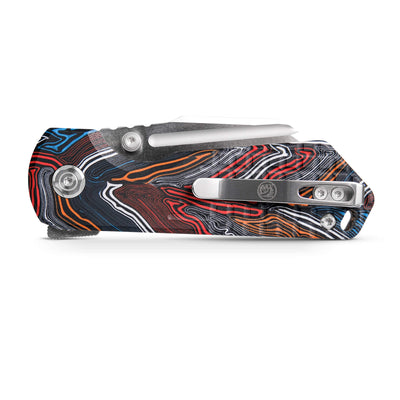Unlock the Secrets: Choosing the Perfect Fixed Blade Knife for Every Adventure!
Fixed blade knives have become a staple for outdoor enthusiasts, adventurers, and survivalists alike. Their simple yet effective design offers unmatched reliability in a variety of situations, from camping and hunting to everyday tasks. Unlike folding knives, fixed blade knives boast a sturdy blade that is permanently fixed, providing superior strength and ease of use. Choosing the right fixed blade knife is crucial, as it can significantly impact your experience in the great outdoors. In this article, we will explore the essential criteria for selecting a fixed blade knife, compare different options, and discuss pricing considerations to help you make an informed decision.

Understanding Fixed Blade Knives
Fixed blade knives are characterized by their non-folding design, which means the blade is fixed in place and does not retract into the handle. This design provides durability and strength, making them ideal for heavy-duty tasks. Compared to folding knives, fixed blades are generally easier to clean and maintain, as they have fewer moving parts. The benefits of using a fixed blade knife are numerous; they excel in extreme conditions, offer greater control when cutting, and are less likely to fail during critical moments. Common materials used in their construction include stainless steel and carbon steel, each bringing unique benefits to the table.
Key Factors to Consider When Choosing a Fixed Blade Knife
When selecting a fixed blade knife, there are several essential factors to consider. First, the blade material plays a critical role in performance and durability. Stainless steel is resistant to corrosion, making it suitable for wet environments, while carbon steel offers superior edge retention but requires more maintenance. Next, the blade length should align with your intended use; a longer blade may be beneficial for tasks like skinning game, whereas a shorter blade may suffice for general camping needs. Weight is another consideration; a lighter knife can be more comfortable for extended use, while a heavier knife may provide better chopping power. The grip should feel secure and comfortable in your hand, ensuring safety during use. Finally, consider sheath options for portability and protection. A good sheath should securely hold the knife and provide quick access when needed.
Blade Material
The choice of blade material can greatly influence a knife's performance and upkeep. Stainless steel is favored for its corrosion resistance, making it ideal for humid or wet conditions. However, it typically doesn't hold an edge as long as carbon steel. On the other hand, carbon steel knives are known for their sharpness and edge retention, but they are more prone to rust and require regular oiling and cleaning. Some manufacturers combine both materials to create hybrid blades that offer the benefits of each. Understanding the pros and cons of these materials will help you select a knife that aligns with your intended use and maintenance preferences.
Blade Length and Design
Blade length is crucial when it comes to usability and effectiveness. A standard range for fixed blade knives is between 4 to 10 inches, with longer blades being more effective for tasks like chopping and slicing, while shorter blades excel in precision tasks such as filleting fish or carving. Different blade shapes, such as drop point, clip point, and tanto, serve various applications. A drop point blade is versatile for general use, while a tanto blade is more suited for piercing tasks. Choosing the right length and design will enhance your efficiency and comfort in various outdoor scenarios.
Comparing Options and Prices
With so many options available, it's essential to know how to compare different fixed blade knives effectively. Start by examining the features that matter most to you, such as blade material, length, and grip design. A higher price tag often correlates with better materials and craftsmanship, but it’s important to assess whether the features justify the cost. Look for knives that offer a good balance between quality and price; sometimes, a less expensive knife can outperform a pricier one if it is designed better for your specific needs. Always consider warranties and customer service as part of the value equation. Taking the time to compare options will help you find a knife that provides both functionality and value for your money.
Tips for Maintenance and Care
Maintaining your fixed blade knife is essential for ensuring its longevity and performance. Start with regular cleaning after each use; wash the blade with warm, soapy water and dry it thoroughly to prevent rust. Sharpening your knife regularly will keep it effective, and investing in a good sharpening tool can make this task easier. For carbon steel knives, applying a thin layer of oil can protect against moisture and corrosion. Proper storage is equally important; consider using a sheath or a protective case to keep the blade safe when not in use. Following these maintenance tips will help you maximize the lifespan of your fixed blade knife.
Essential Takeaways for Selecting Your Fixed Blade Knife
Choosing the right fixed blade knife is a vital decision for any outdoor enthusiast. By understanding the characteristics of fixed blade knives, considering key factors such as blade material, length, and weight, and comparing various options, you can find a knife that meets your needs. Remember to also prioritize maintenance to ensure optimal performance throughout its lifespan. Take your time in making this decision, and you'll be well-equipped for your next adventure!












Comments